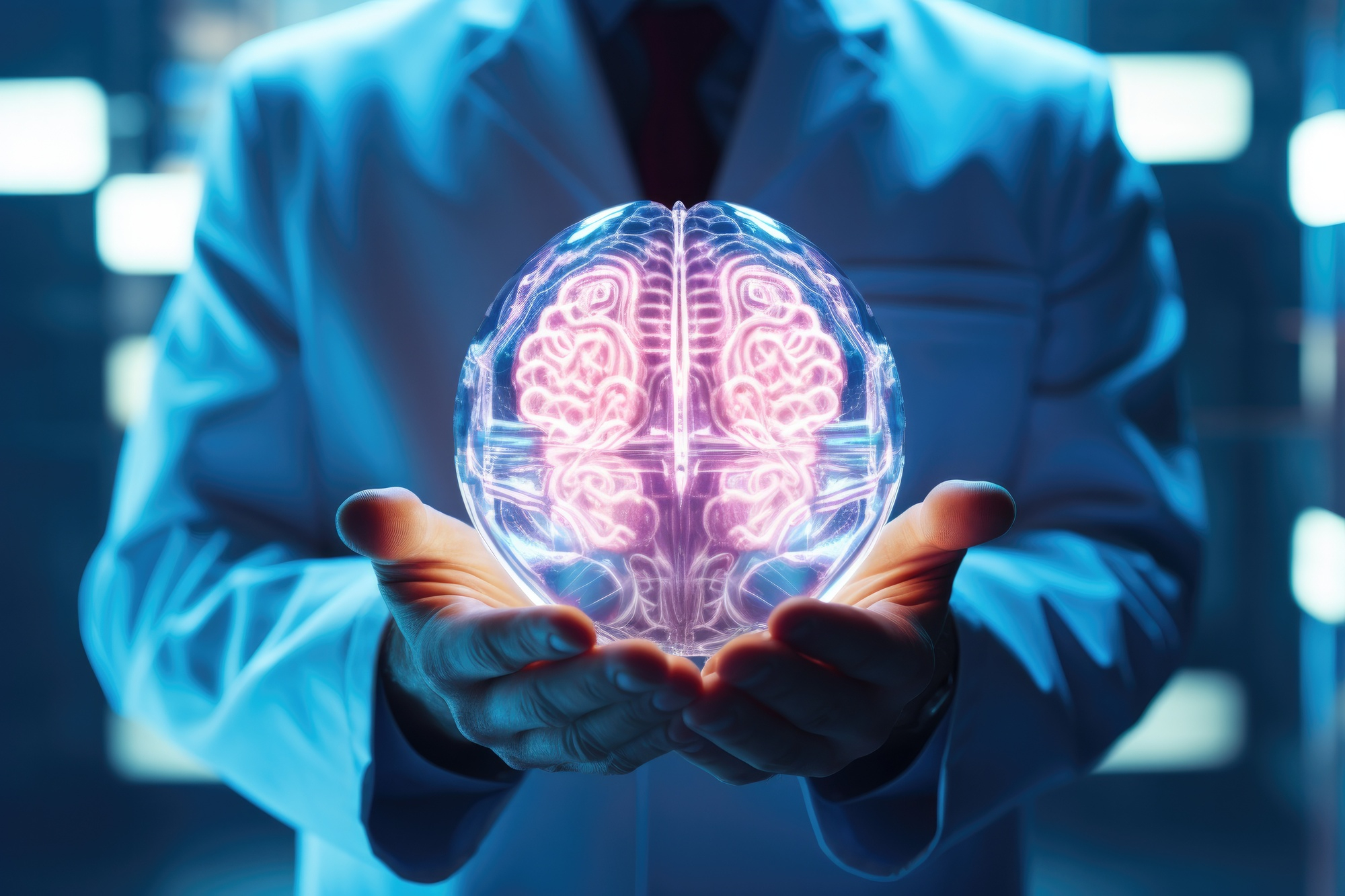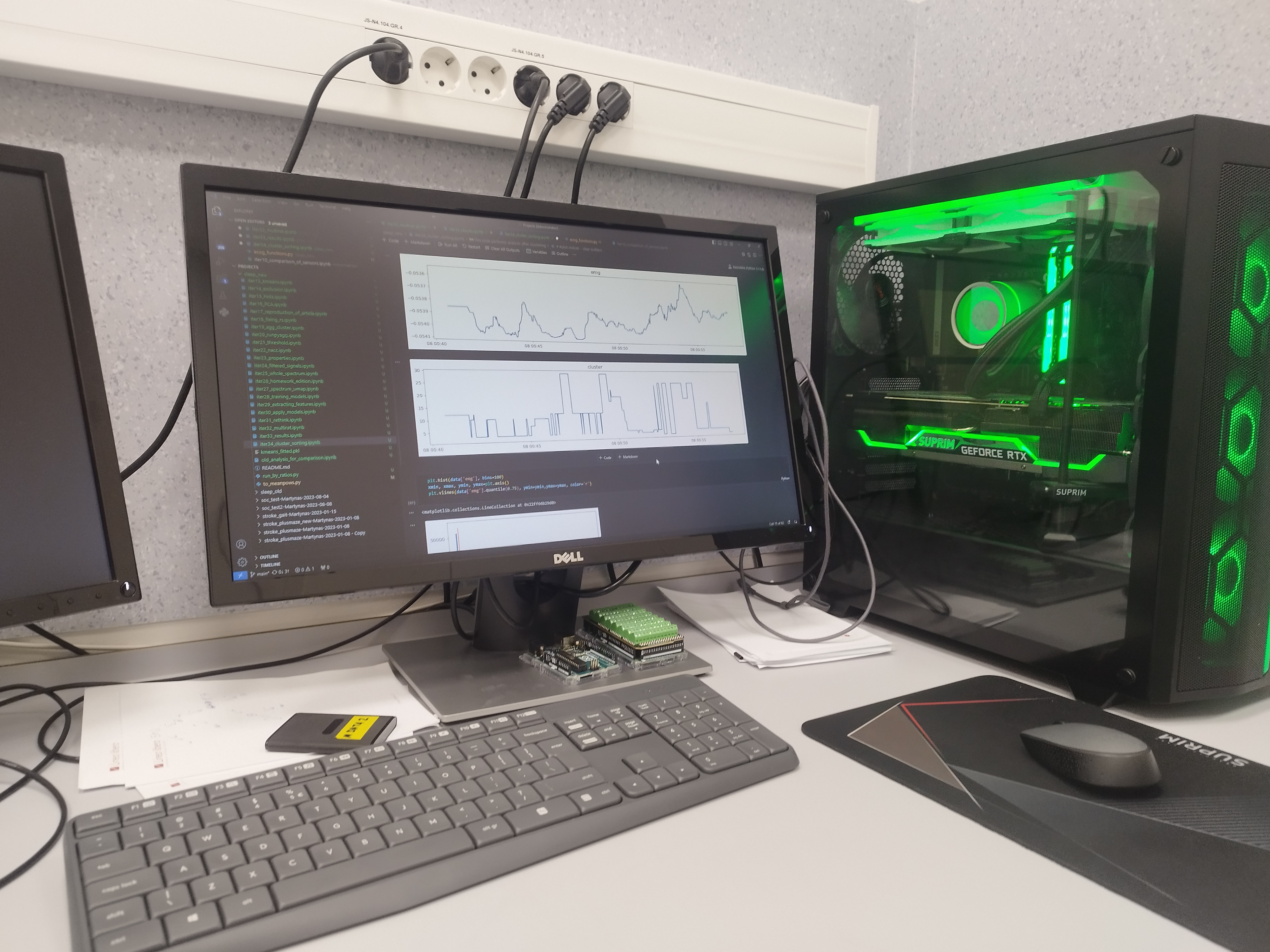Osvaldas Rukšėnas – Not All Brain Functions Deteriorate with Aging

At the age of 30–35, ageing-related processes are already recorded in the brain, but some functions may improve. “For example, language skills either do not decrease or may even improve. Over time, a person gains more life experience, so the vocabulary expands as well,” says Prof. Osvaldas Rukšėnas, a neuroscientist at the Life Sciences Center of Vilnius University. According to him, a growing body of scientific evidence shows that physical and intellectual activity, a balanced diet, and socialization can help maintain brain health for longer.
Prof. Rukšėnas is one of the most famous neuroscientists in Lithuania, who founded the Lithuanian Neuroscience Association and created the first and so far the only master’s degree programme in Neurobiology in Lithuania. Currently, the professor’s research interests include brain gender, addictions, brain ageing, hormonal effects on the brain, and even psychedelic drug therapy.
At present, the professor is conducting experiments with sleep, the results of which he’ll be able to comment on in more detail over the course of the year.
As we’re going to talk about brain gender and gender differences in this interview, I’d like to learn how it was determined? Historically, the subjects of neuroscience research seem to have been predominantly male. Can we say that gender balance has now been achieved in research?
I’d say that until 20–25 years ago, nobody paid attention to gender. When it comes to human studies, at best, they included sociodemographic data: age, education, body mass index, etc. If rats were studied, it was their line or species, age, and weight.
However, later experiments began, the data of which showed that sex hormones affect not only the sexual system. This led to the notion that gender is a very important factor. For about 20 years now, we have had a clear understanding that gender needs to be addressed. Now, if research is done with humans, gender is taken into account.
What also helps is the very rapid progress of the technologies that are used in research. I’ll put it that way: current brain imaging, which allows us to study fantastic things in the brain of living people, gives researchers a free hand. After all, in the past, there were many technical limitations and research of the human brain often took place after death.
Therefore, many things are - how shall I put it - “restudied”, many questions are reevaluated because phenomena can be researched in living people.
Prof. Osvaldas Rukšėnas
Speaking of hormones, can you explain the role of hormones in brain function, especially with respect to gender differences?
Let's start with the fact that there are different types of hormones, both chemically and functionally. If we talk about sex hormones, these are steroids, which start to be secreted very early during development (especially testosterone). The fetus is initially asexual, and only later, it begins to develop towards one or the other sex. If the body develops towards a male, the secretion of testosterone begins, which affects brain activity as well.
Since the brain has to form, everything happens very intensively: cell division, specialization, formation of connections, etc. These are very complex processes in which the effect of hormones is of great importance.
For example, I’ll mention the classic studies on testosterone and aggression. It has been observed that if testosterone levels are increased during development, even if the baby is female, there will be more aggressiveness.
Hormones are also very important after birth. As there are hormone receptors in the brain, it shows that interactions with hormones are indeed taking place. In women, the change in hormone concentration is more pronounced, and it changes with age. This would be another direct effect on the brain.
And what are the main differences between male and female brain?
The more we study, the more differences we find. Brain volume and weight are two things, as the brain volume of men is slightly larger (up to 10%). However, it’s important to stress that this is noticeable only when the absolute mass is considered. If normalized to the total body weight, the differences disappear.
Moreover, we already know that the numbers of neurons are different, and when the numbers of neurons are different, the number of synapses, the density is also different. Therefore, functional consequences occur because neurons are like processors that make decisions at their own level. So the more of them, the more synapses, the more complex the networks, the more complex processes can take place.
Another very distinct difference is the connections between brain regions and hemispheres. A kind of conceptual transformation is currently taking place. From the fact that the total number of neurons is important to the fact that it is not how many neurons there are but how they interact with each other. Of course, this does not negate the importance of the total number of neurons, as it is better to have a billion than a million if we are talking about a human being. In the male brain, connections between brain regions in separate hemispheres are clearly dominant, while in women, interhemispheric connections prevail.
Another research interest of yours is brain ageing. What happens to our brain as we age?
In one word, it’s deterioration (laughs). On the other hand, it’s not so bad. The volume of the brain decreases: in the case of normality, it is not drastic, it cannot be compared to, for example, Alzheimer’s disease. But it is still decreasing.
With ageing, the volume of the ventricles increases. We have four ventricles in the brain, which are quite large, and they increase in size as we age. Bearing in mind that the brain is in the skull, it follows that as the ventricles enlarge, the neural tissue of the brain decreases.
The number of neurons and synapses is decreasing. It occurs individually: faster for some, slower for others. The processes do not take place evenly but depend upon the regions. Frontal regions stand out. It is unfortunate because, according to our current understanding, these regions are responsible for all of our cognitive activity: it is here that decisions are made, predictions are made, controls are imposed, and so on.

When do those ageing processes begin?
Again, it depends on whether I am discussing optimistic or pessimistic theories. Neurobiologically, from the age of 30–35, certain curves are already beginning to descend. These are not drastic changes, but statistically, they are felt precisely at this age.
A major transformation begins from the age of 60–65, and from the age of 70, it is even more dramatic. Of course, cognitive functions also deteriorate naturally.
However, there are several optimistic versions. For example, language skills either do not decrease or even increase. Over time, a person gains more life experience, so the vocabulary expands. Here, we are talking about people who live intellectually more actively – they don’t just read ads, etc.
There is also such a Lithuanian term išmana (smartness/intelligence), I like it very much. There is fluid and crystallized intelligence. Crystalized knowledge improves a little with age – it’s our general knowledge perceived. Fluid intelligence is associated with decision-making: when a decision needs to be made here and now. The efficiency of this function decreases, and then the problems begin.
To what extent does a person’s social and cultural environment affect ageing processes in the brain? Are there differences between people who live, for example, in Lithuania and Portugal, where there is a lot of sunshine and colours?
Geography alone is not enough – you can live in Portugal locked in a basement and not see the Sun. It is better to take the factors: the Sun, fresh air, nutrition, and physical activity.
A growing number of publications show that it is very effective. It has a positive effect on our general well-being, and at the same time, it works against ageing. It has even been shown that, for example, a daily half-hour walk in a forest environment already has a positive effect. And if a person also exercises and tries to eat healthy food, it adds up and really benefits.
Another important point that comes from your question is socialization, which is very important for healthy ageing. By the way, this factor is also observed in studies with dogs.
Is it important to what our social environment is like? Or is the mere fact of socialization important?
There are many aspects here. If a person is sitting alone and withdrawn, then any socialization is better. Of course, socialization must be positive – if you are constantly bullied in your group, it is unlikely that you will benefit from such socialization.
What else to pay attention to - if you are in a very active environment but you yourself have limited capabilities, what will happen? Stress, suffering. The comparison: “Others can, and I cannot; I’m a failure, etc.” Then, negative emotions will accumulate and have the opposite effect.
On the other hand, if a person chooses at will, it is likely that they choose something that pleases them.

Processing of experimental data
And what do you as a neuroscientist do to keep your brain healthy?
First of all, I exercise my brain. It gives me great pleasure since now there are so many scientific publications that God give me time to cover them. Cultural life is also important to me. My job is more sedentary, so I try to exercise.
The last topic I’d like to discuss with you is psychedelic therapy. I moderated one Vilnius University discussion on this topic, in which you participated and spoke on this issue. Could you explain what is meant by psychedelics? How are they different from narcotics?
Psychedelic substances affect brain states – they are LSD, psilocybin, ayahuasca, MDM, etc. The list is actually not very long. One of the most important criteria is that they are not addictive, unlike narcotic substances.
In the 1950s–1960s, when LSD was synthesized, a wave of consumption began in the United States, which was greatly influenced by the hippie movement. And, you could say, suddenly, everything was brought to a stop – and it happened for political reasons. Vietnam War was going on, so the US government stopped researching LSD. This cognitive segment was kind of frozen. Now, it seems to be thawing off – more and more research is being conducted. And there is a lot of interesting data.
And what new things did we learn?
Psilocybin therapy for depression showed positive results after two sessions of therapy (it is a teamwork with a psychiatrist and psychotherapist). A case was described where the positive effect was recorded for up to half a year. Knowing how many people suffer from depression and how difficult it is to deal with it, such an effect would be simply fantastic.
However, it is important to understand that everything has a price. The question remains – if there is such a strong long-term effect, does it cause any side effects? So far, no one can answer this question. It will take time. A possible negative effect on blood vessels has already been described. What I want to say is that not everything is seen through rose-coloured glasses.
So, on the one hand, there is potential for treatment, however, there is a lot of work to do to find out if side effects really don’t exist.